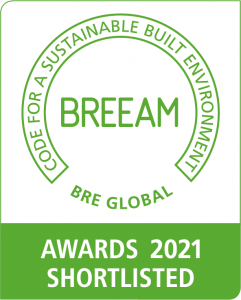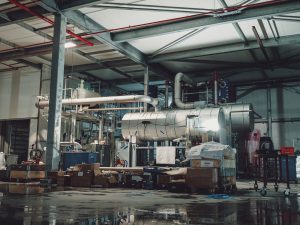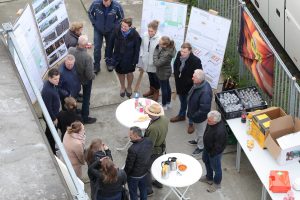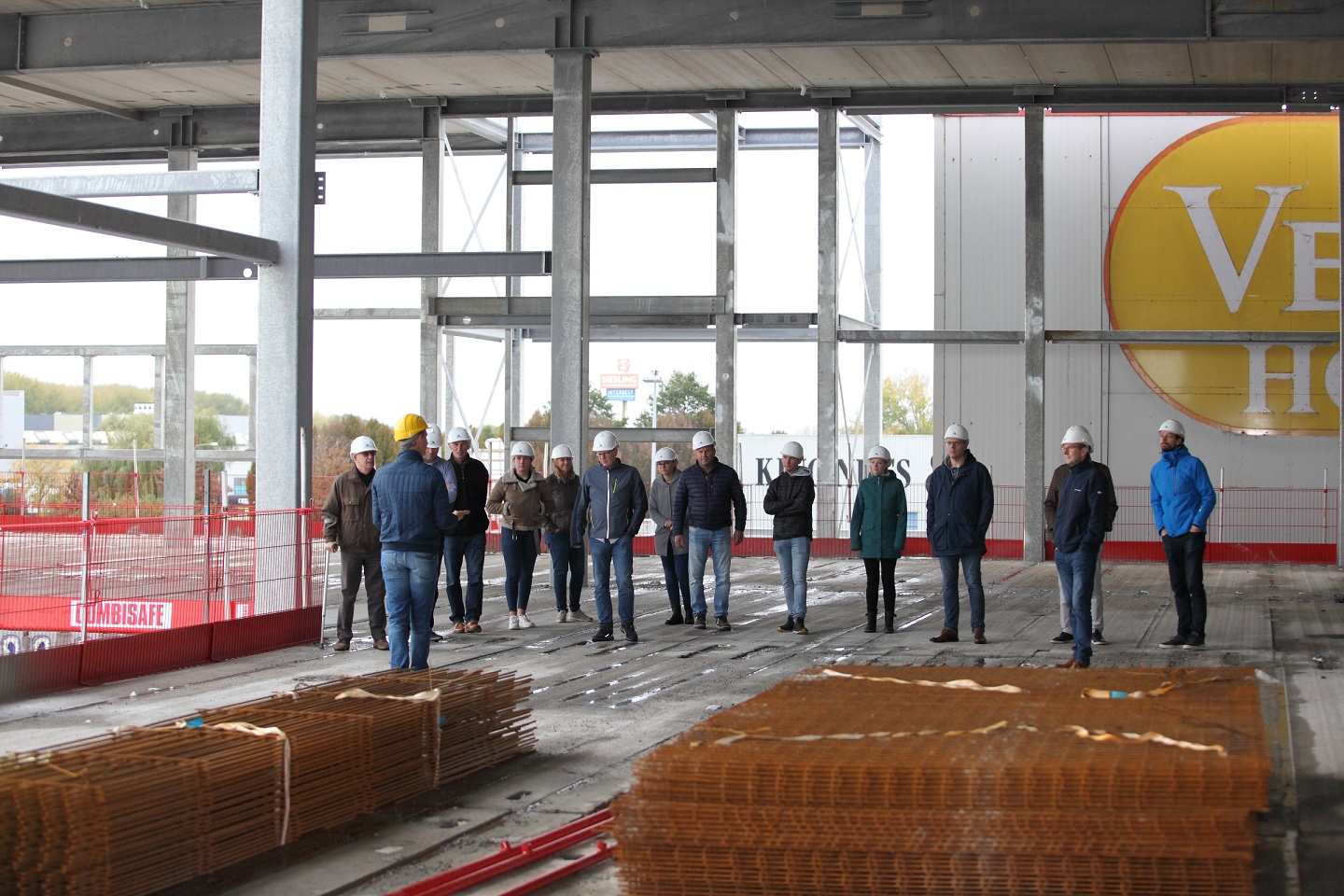Project Details
- Scheme & Version: NL New Build and Renovation 2014
- Stage: Design
- Rating: Outstanding
- Score: 90.14%
Project Team
- Developer/ Client: Vergeer Holland
- Architect: RDG Ontwerp & Advies
- Building Services: Kromwijk Elektro
- Constructor: De Vries & Verburg Bouw B.V.
- Assessor Company: DuurzaamheidsCertificering.nl
- HVAC: Voets en Donkers
- Building Management: Van Vliet
- BREEAM Consultant: W4Y adviseurs

About the Building
Vergeer Holland was one of the first companies that started to pack cheese into slices or blocks. With their own cheese ripening facilities Vergeer mainly supplies their customers with ripened aged cheese produced in the Netherlands.
As a 100% family-owned company, Vergeer Holland has had sustainability at its heart since 1934, with investments made for the long run and for future generations of Vergeer. The project to realise Vergeer Holland’s new factory in Bodegraven, in the South Holland province, was named “Next Generation”. The building has been designed to be fit for current and future requirements and is a leading example of a modern, futureproof factory.
Consisting of a total of 25,000m2 across 3 floors, built on the plot of Vergeer Holland’s former factory, the ambition was to become the most sustainable factory in the Netherlands and even north west Europe. This included aims to outperform EU & Dutch 2050 CO2 reduction objectives till 2050 and achieve 100% recyclable packaging materials. Indeed, the new building makes it possible to be self-sufficient in production. Measures include:
- No gas connected to site
- Locally generated energy, using PV panels
- Trucks optimised to prevent leakages and maintain cool temperatures
- Reducing volume of traffic by optimising logistics
- State-of-the-art integrated HVAC-system
HVAC System
The HVAC-system is an integrated system for all facilities, including the cheese ripening facility and production area. To minimise energy consumption, a special air-to-air heat & cold recovery system saves 62% of energy consumption in the cheese ripening facility.
An ammonia cooling system, consisting of different condensers, enables low condensing pressure saving energy for cooling purposes, and maximising heat recovery. Recovered heat is used for both water and floor heating in office spaces. To increase the temperature of the waste heat, a special isobutane heat pump is installed.
Different transcritical CO2 heat pumps are integrated with the air treatment system. Beside their high efficiency, local heat pumps reduce the cooling and heating piping network over the roof of the building.
Packaging
The new construction also houses two new production lines, making it possible for Vergeer Holland to introduce new packaging formats, enabling a reduction in film from 0.37m2 per 12 packets of cheese, to 0.34m2, a reduction of 8%.
Further, changes to the packaging to use mono-pet helped achieved almost total recyclability, with a 22% reduction in plastic use in the main packaging. New production lines also allow more flexibility, enabling smaller packaging to be produced when needed, thus avoiding unnecessary wastage. Based on a benchmark of 35,000,000 packs a year, this equates to savings of approximately 110,000kg of plastic.

About the BREEAM Assessment
In accordance with the family’s vision of building for the Next Generation, Vergeer Holland aimed to build both according to and beyond known sustainability standards. They therefore looked to BREEAM to provide guidance and certification for this, whilst continuing to aim high and going beyond what was required, with continuous development and innovation of design.
This enabled the building to score well across all BREEAM categories, enabled through design, re-use of water, use of materials, localised energy provision and installations including HVAC.
BREEAM standards were also used as in important reference point during procurement, used to provide contextual information to suppliers, whilst Vergeer Holland challenged supplies to go beyond the requirements.

Environmental Challenges
For Vergeer Holland, there were two main environmental challenges that their green strategy sought to address:
- Influence in their direct sphere, primarily reduction of plastic through recyclability and reducing requirement for plastic use
- In their supply chain via the footprint of their milk and cheese. Vergeer Holland recognised their responsibility to encourage suppliers to improve on environmental impact.
Therefore, using BREEEAM as a guidance point, Vergeer Holland’s approach was committed to looking across the entire chain.
Benefits of Assessing to BREEAM
By following the BREEAM assessment path, Vergeer Holland have realised a factory with significantly lower running costs than its predecessor. Reasons for this include lower energy consumption due to economical installations and PV panels, re-use of water and increased ability to reuse cheese.
The value of the certification is that every competitor and customer is highly interested in the way we combined sustainability in combination with an automated, highly efficient factory.
BREEAM was essential for our long-term strategy. We wanted to outperform the current standard in terms of sustainability, to be sure the factory is fit for the next generation. Due to this success, BREEAM in-use certification will probably be the next step to take.

